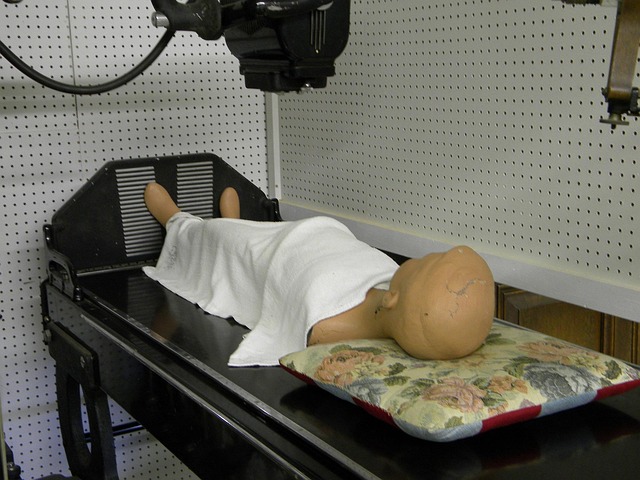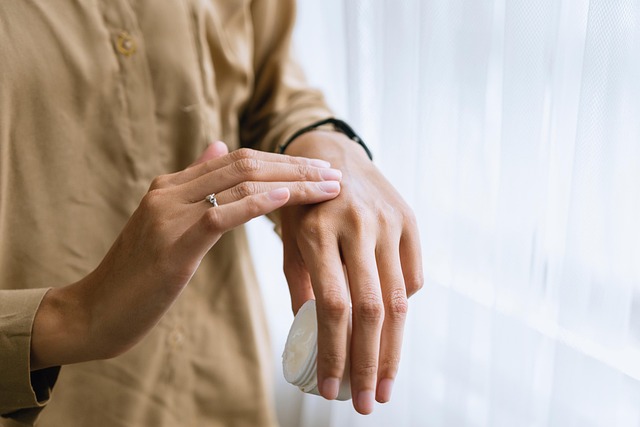Slouching and rounded shoulders can lead to chronic pain and increased injury risk due to poor posture, muscle imbalances, or medical conditions. Accidents can exacerbate these issues, causing spinal and shoulder misalignments. Corrective chiropractic care focuses on manual adjustments to the spine, promoting healing and reducing nerve pressure to prevent future injuries. Maintaining good posture through ergonomic practices at home and work is crucial for avoiding common postural problems, even after accidents requiring corrective chiropractic treatment.
Slouching and rounded shoulders are common postural issues that can lead to various health problems. This article explores the causes, effects, and potential solutions for correcting these problems, with a special focus on the role of corrective chiropractic care in postural rehabilitation following accidents. We also offer practical tips for maintaining good posture at home and work. Understanding these issues is essential, especially in today’s sedentary world, where proper alignment can significantly enhance overall well-being. Additionally, we discuss how corrective chiropractic for postural issues after accidents can be a game-changer for recovery.
- Understanding Slouching and Rounded Shoulders: Causes and Effects
- The Role of Corrective Chiropractic in Postural Rehabilitation After Accidents
- Practical Tips for Maintaining Good Posture at Home and Work
Understanding Slouching and Rounded Shoulders: Causes and Effects

Slouching and rounded shoulders are common postural issues that can have significant effects on an individual’s health and well-being. This condition often results from a combination of factors, including poor posture, muscle imbalances, and even underlying medical conditions. Over time, slouching can lead to various complications, such as chronic pain in the neck, back, and shoulders, as well as increased risk of injuries and long-term musculoskeletal disorders.
Accidents, whether they are car collisions or sports-related injuries, can also contribute to the development of rounded shoulders and slouching. In these cases, individuals may experience muscle strains, fractures, or dislocations that disrupt the natural alignment of the spine and shoulders. Seeking corrective chiropractic care after such incidents is essential in addressing these postural issues. Chiropractors use a range of techniques, including manual adjustments, to correct misalignments, improve spinal health, and promote better posture, potentially reducing the risk of future injuries and chronic pain.
The Role of Corrective Chiropractic in Postural Rehabilitation After Accidents

Corrective Chiropractic plays a pivotal role in postural rehabilitation following accidents, offering a natural and effective approach to addressing postural imbalances and pain resulting from traumatic events. Chiropractors skilled in this field assess and correct misalignments in the spine and joints, which can often contribute to rounded shoulders and poor posture. By adjusting the spinal column and supporting soft tissues, they help restore proper alignment, reducing pressure on nerves and promoting healing.
This specialized care goes beyond mere symptom relief; it focuses on long-term postural correction. Chiropractors educate patients on ergonomic principles and provide guidance for gradual adjustments in daily routines to prevent future strain. Through a combination of manual adjustments, exercises, and lifestyle modifications, individuals can regain control over their posture, alleviate discomfort, and improve overall well-being after an accident. The goal is not just to fix the immediate issue but to empower patients with the tools necessary for sustained postural health.
Practical Tips for Maintaining Good Posture at Home and Work

Maintaining good posture is essential, especially if you spend a significant amount of time sitting at a desk or in front of a computer. Here are some practical tips to help you stay aligned and avoid developing postural issues, such as rounded shoulders and slouching:
At home, consider investing in an ergonomic chair that provides lumbar support. Position your screen at eye level to prevent neck strain, and ensure your workstation is set up according to the 90-90-90 rule – knees bent at 90 degrees, elbows at 90 degrees, and wrists neutral. Regular breaks are key; every 30 minutes, stand up, stretch, and take a short walk to recharge your muscles.
At work, if you’re not lucky enough to have an ergonomic set-up, simple adjustments can make a big difference. Try using books or small boxes to elevate your monitor to eye level. Adjust your chair height so your feet are flat on the floor, and consider placing a pillow or rolled-up towel behind your lower back for extra support. Remember, good posture is not just about looking presentable; it’s also a preventative measure against future postural issues, especially after accidents that may require corrective chiropractic care.
Slouching and rounded shoulders can significantly impact overall health and well-being, especially after accidents or injuries. Corrective chiropractic care plays a vital role in postural rehabilitation, helping to realign the spine and restore proper posture. By combining professional treatment with practical tips for maintaining good posture at home and work, individuals can effectively manage these issues and prevent future complications. Remember, proactive measures like adopting healthy habits and seeking appropriate care are key to achieving and maintaining optimal posture.














